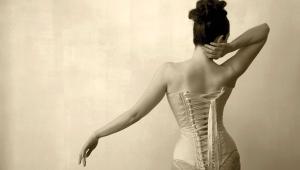Also the wedding speech moment is very important for the groom and for the bride.
Along With The Formals: Tips On Getting Great Wedding Reception Shots
The First Dance
There is no one “right” way to take these images, as every reception venue is different and every photographer has his/her own method. Some photographers swear by video light while others prefer on- and/or off-camera flash. San Francisco-based photographer Lisa Lefkowitz specializes in film photography and has been featured in Martha Stewart, Elegant Bride, and Brides. According to Lefkowitz, that first dance between the bride and groom is often chock-full of emotion. “The bride’s eyes, though closed, convey a lot of emotion. For me, the first dance is all about the body language between the bride and groom,” states Lefkowitz, whose typical strategy for first dance photos is to add video light to the situation, with minimum use of flash. “Using the video light allows me to preserve the background a little more, plus the feel of what it was like to be there.”
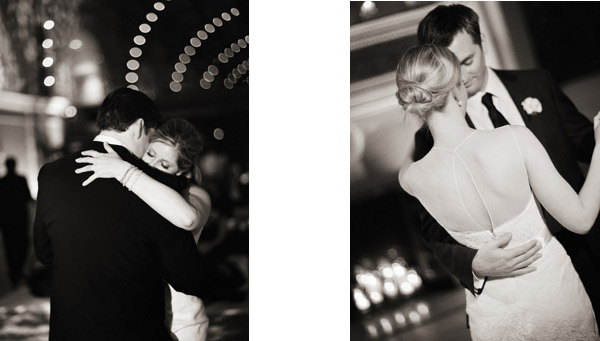
Aesthetically speaking, Lefkowitz is always looking at the background to see what will read well and to pick the best angle from which to shoot. “Sometimes it’s an unexpected angle. Sometimes I need to move around the dance floor to find the best vantage point. Sometimes I want all the guests looking at the couple,” she says. Lefkowitz suggests photographers try to capture more of the romantic feel of the body language and not just the literal. “I think it’s nice to have a mix of wide shots that show the bride and groom in the environment and the guests looking at them; a close-up with a full body shot; and a tighter, waist-up shot. I like to see a mix like that,” Lefkowitz concludes, “which also works well when designing an album.”
Off-Camera Flash
According to Philadelphia-based photographer Cliff Mautner, long lenses, off-camera light, timing, and framing equate to dramatic images during a portion of the day that can definitely be taken for granted. “It’s all about taking the flash off the camera and using it in a directional fashion. Too often photographers will keep the flash on the camera for the majority, or the entire day, which I think is a major faux pas. Directional, off-camera light allows me to achieve a texture, dimension, and mood that can’t be attained with on-camera flash (something I teach in my lighting and skill set boot camp),” Mautner says. “It also gives me a much more versatile range of focal lengths.” Mautner prefers to use a 70-200mm or a 200mm during the reception so he can give his subjects space and distance so they don’t feel crowded or self-conscious. “It lets them be themselves and to experience the moment without a camera in their face.”

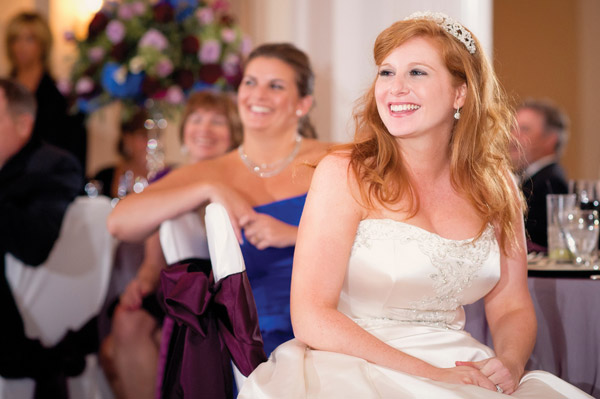

There are a few times during a reception that emotions are going to be high, Mautner notes. “The toasts and parent dances, in my opinion, are probably the most photographically productive moments throughout a reception because of the emotions involved. It’s our job to take advantage of those situations to the best of our abilities from both an artistic and technical standpoint,” he states. “You can’t just mail it in with a flash on a camera with a 24-70mm lens, which is what the majority of photographers do. There needs to be separation between the couple and the person making the toast. I don’t want that person standing behind the bride and groom because [the couple] either stretches their necks to look over their shoulders to see the toaster, or they stare down at their plates. When the person doing the toasting is in front of and in full view of the people they’re toasting, there’s eye contact. There’s an action and a reaction. I’m concentrating on both at the same time—the toaster for a few frames, then back to the couple for a few frames, and so on.”
Lighting, framing, and composition, Mautner says, all have to come into consideration in order to capture both an emotive and graphic photograph. “That’s where the 70-200mm lens comes in because I can really control the composition with the long focal length. I can eliminate all types of extraneous elements in the image and isolate my subjects.” During the first dance, Mautner says he prefers not to be noticed, so again, he uses a long lens. “I’m using a long lens and I’m using off-camera light. And, there are times when a flash isn’t even necessary.”
In general, Mautner believes video lights are a distraction. “If you’re blasting a video light during a reception, you’re drawing attention to yourself, even more so than a speedlight at a very low power. You don’t want [the event] to be a spectacle like Monday night football. In order for me to use a video light, which is a static, constant light source,” he explains, “it’s got to be bright enough for me to get my shutter speed fast enough. So from a technical standpoint, for me, a speedlight works better because the flash duration allows me to use slower shutter speeds.” Mautner believes the video light does have its place, for instance, as a supplement for portrait sessions. “It’s fantastic; a wonderful resource. I’m not even saying it’s wrong to use during a reception; I just think it should be used in a discriminating fashion. When I do use it, I use it with a snoot so it’s directional.
Whatever light you use,” Mautner advises, “use in a directional fashion.”
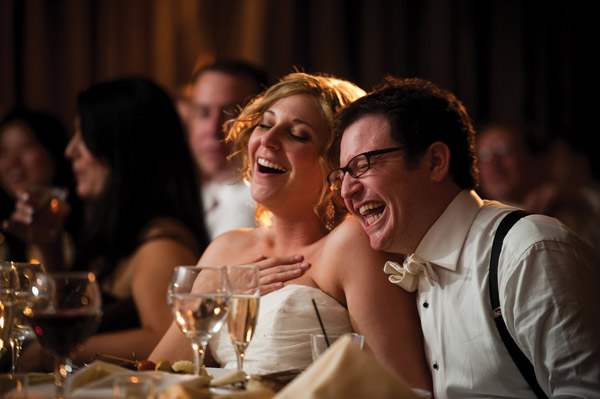

Ready To React
“For the first dance pictures I use a mixture of on-camera and off-camera flash,” Boston-based photographer Kate McElwee states. “I like to get the couple dancing and all the guests in the background. I think it gives a good idea of the atmosphere, and I think it’s nice for the couple to see people enjoying their first dance as well. I do prefer to use natural ambient light if I can, but if lights will improve the image, then I will add them.” Typically, when working with off-camera light, McElwee has three or four speedlights mounted on simple black light stands. “They’re basically bare bones; I don’t use any umbrellas or other modifiers.
I find I can then use them for whatever kind of lighting effects I want—for example, a starburst if I stop down my aperture, or, if I shoot wide-open—1.4 or 1.8—I get a more blown out background.”
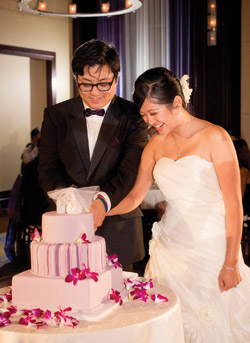
McElwee also likes dramatic light and would rather blow out some of her background in exchange for texture and drama. “During the first dance and parent dances, I’ll shoot a mixture of lighting styles using the same lights in the same spots. By placing the subject between my camera and the light, I get a gorgeous rim light effect that separates the dancers from the background and adds drama.” Another benefit of having a number of off-camera flashes around a room, McElwee notes, is you’ll get catchlights in people’s eyes. “People look alive and well and vibrant, instead of that dead-eye look you can get if you don’t have enough light.”
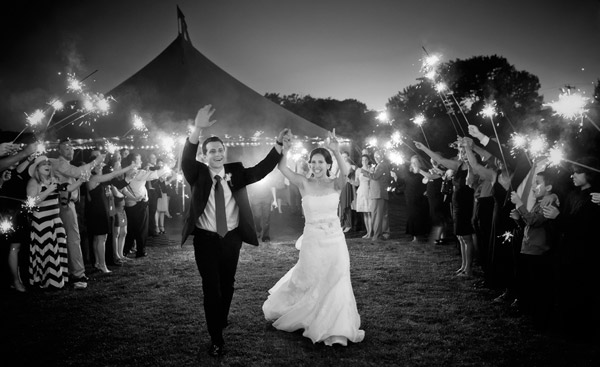
While photographing the reception, McElwee tries to get a lot of photos of the guests as well as the couple. “They make great images for the album and it’s just a nice way to see who was there. I also try to include some of the details from the tables when I grab these shots, such as centerpieces, chairs with bows tied around them, etc. Once you’ve photographed the main people toasting it’s fun to look around the room and see what else is going on,” McElwee concludes. “For instance, in one photo, a flower girl was having some kind of strange little nervous moment, which was funny. Her parents love the photo and the bride and groom think it’s hilarious; it’s going in their album.”
Top 10 Reception Photo Tips
Kate McElwee
1) Get down low to clean up the background both during the first dance (if guests are standing to watch) and during toasts.
2) Light the whole room! Use three to four off-camera lights spread around the room (set on manual) so you can get the reactions of guests to toasts.
3) Snap a few grip and grins when asked; get detail shots.
4) Join the guests and have fun on the dance floor for better dancing photos (when they see me having fun they trust me and let me “in” ); shoot wide and close (I usually use a 35mm lens).
5) Step outside the venue to capture the atmosphere inside (especially with tents); the warmth of the light inside will contrast with the blue of the night sky, which adds to the warm atmosphere.
6) Use slower shutter speeds and high ISOs to get as much ambient light in the photo as possible.
Cliff Mautner
7) Get the flash off the camera to create dimension, texture, and mood.
8) Use long lenses to give subjects the space they deserve instead of being on top of them.
9) Isolate your subject matter and create better compositions.
10) When the quality of light is there, skip the speedlight altogether.
- Log in or register to post comments


Seeing a wedding like this almost made me cry but I'm far from that now because I am more than happy. - Casa Sandoval











